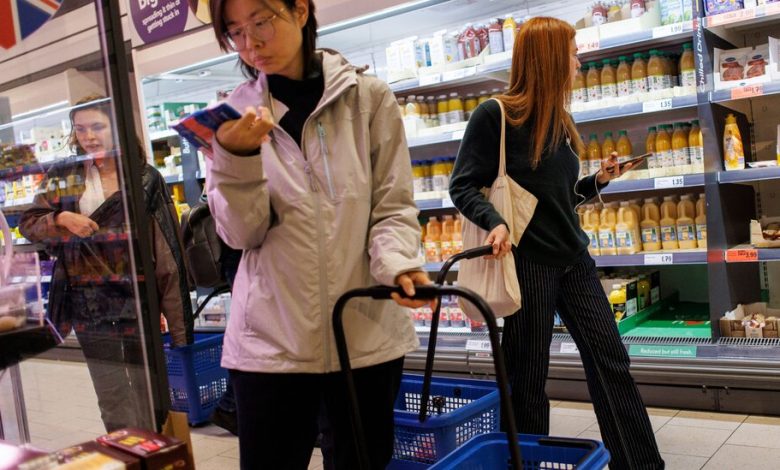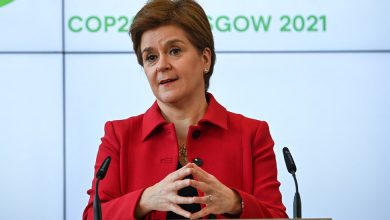U.K. Inflation, Unchanged at 6.7 Percent, Ends String of Declines

The News
The inflation rate in Britain held steady in September, defying expectations of a small decline, after as rise in fuel prices offset a slowdown in food inflation.
Consumer prices overall rose 6.7 percent last month from a year earlier, the same pace as the previous month, the Office for National Statistics said Wednesday. For the first time in four months, the cost of transportation added to the rate of inflation, because of an increase in gasoline and diesel prices.
Food prices fell on a monthly basis for the first time in two years, pushed lower by milk, cheese and soft drinks. But the easing in food inflation was driven only by “relatively small price movements,” the statistics office said.
Deeper Into the Numbers: Core inflation eased slightly.
Even though headline inflation failed to budge last month, it has fallen notably from its peak, which was above 11 percent a year ago. Still, price pressures are strong across the economy. Core inflation, a measure that strips out food and energy prices and is used as a gauge for domestic pressure, has been slower to turn. It was 6.1 percent in September, down from 6.2 percent in August and above 7 percent as recently as May.
Inflation in the services sector, which is heavily influenced by wage pressures and tends to be stickier, rose 6.8 percent last month compared with a year earlier. That was a slightly slower pace than in August.
As price growth slowly eases, analysts are wary that a jump in energy prices, particularly following the surprise attack on Israel by Hamas, could fuel a resurgence in inflation.
Why It Matters: For some, the burden is easing as wages rise faster than prices.
As Britain’s inflation rates slows, the pressure on household budgets is expected to ease because of rising pay. For the past few months, average wages have been growing at a faster rate than prices. However, this has been felt unevenly. The fastest wage growth was in the manufacturing sector and financial and business services, according to the statistics office on Tuesday. Workers in construction, retail and hospitality were still experiencing pay growth slower than inflation.
On average, wage growth has been strong, at nearly 8 percent between June and August compared with a year earlier. This brings some comfort to households with fuller wallets after a year and a half of pay falling behind rising prices. But it’s a challenge for policymakers at the Bank of England, who watch wage growth closely for signs that it’s making inflation more persistent.
At the same time, Britain’s inflation rate is still higher than its international peers. The rate is below 4 percent in the United States and averages 4.3 percent in the eurozone. In Britain, inflation is forecast to fall to just below 5 percent by the end of the year, according to the Bank of England.
What’s Next: Bank of England set to stick to its restrictive stance.
Britain is bracing for a relatively long period of high interest rates, as officials at the Bank of England try to push inflation down to their target of 2 percent.
Last month, policymakers held interest rates steady for the first time since late 2021. The decision was made by the slimmest of margins, with four of the nine rate-setters preferring to raise rates again. But they collectively agreed that interest rates need to remain “sufficiently restrictive for sufficiently long” to meet the inflation target, they said. Rates are at 5.25 percent, the highest since early 2008.
Andrew Bailey, the governor of the central bank, said last week that future decisions would also be “tight” and there was much more to do on inflation.Policymakers will meet again to set rates in the first week of November.




